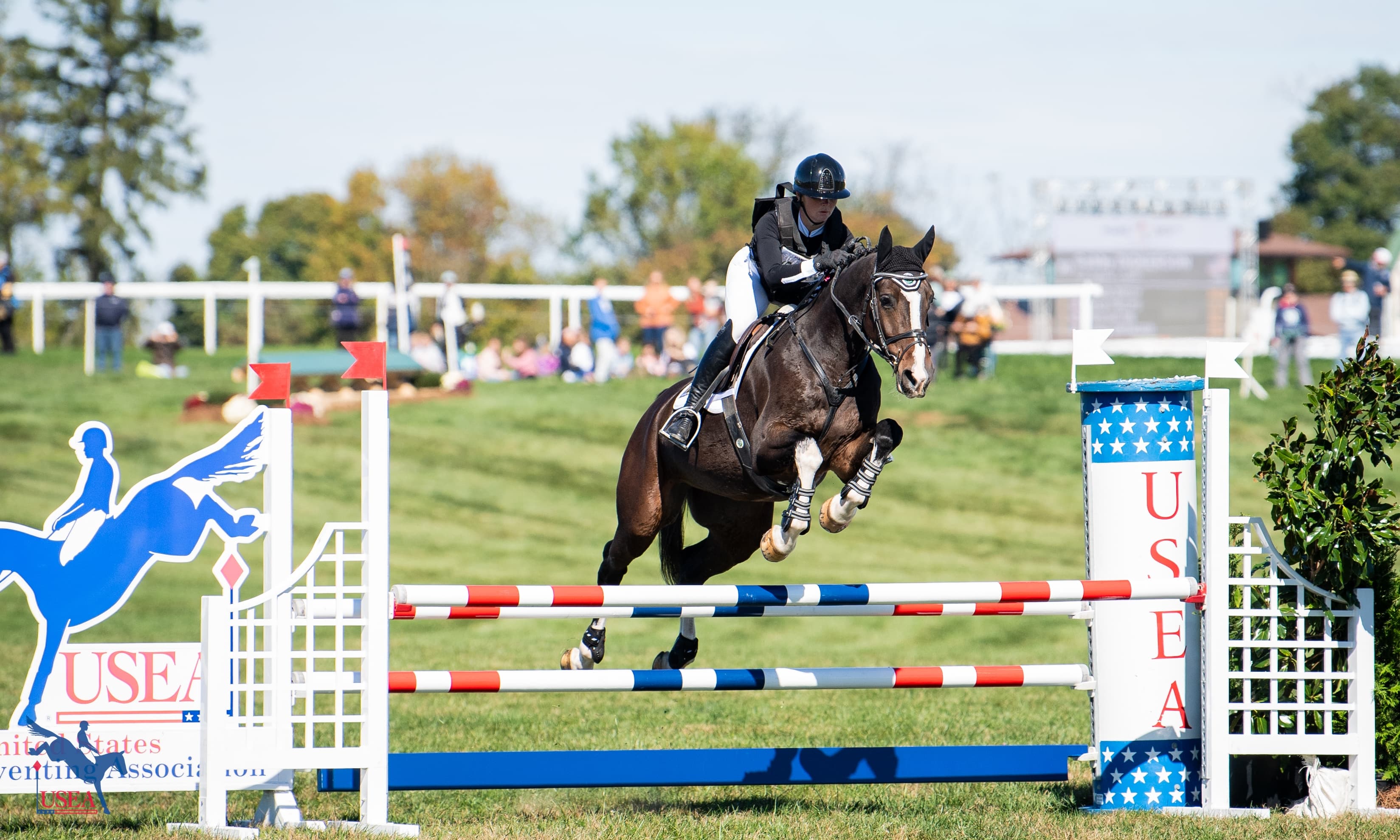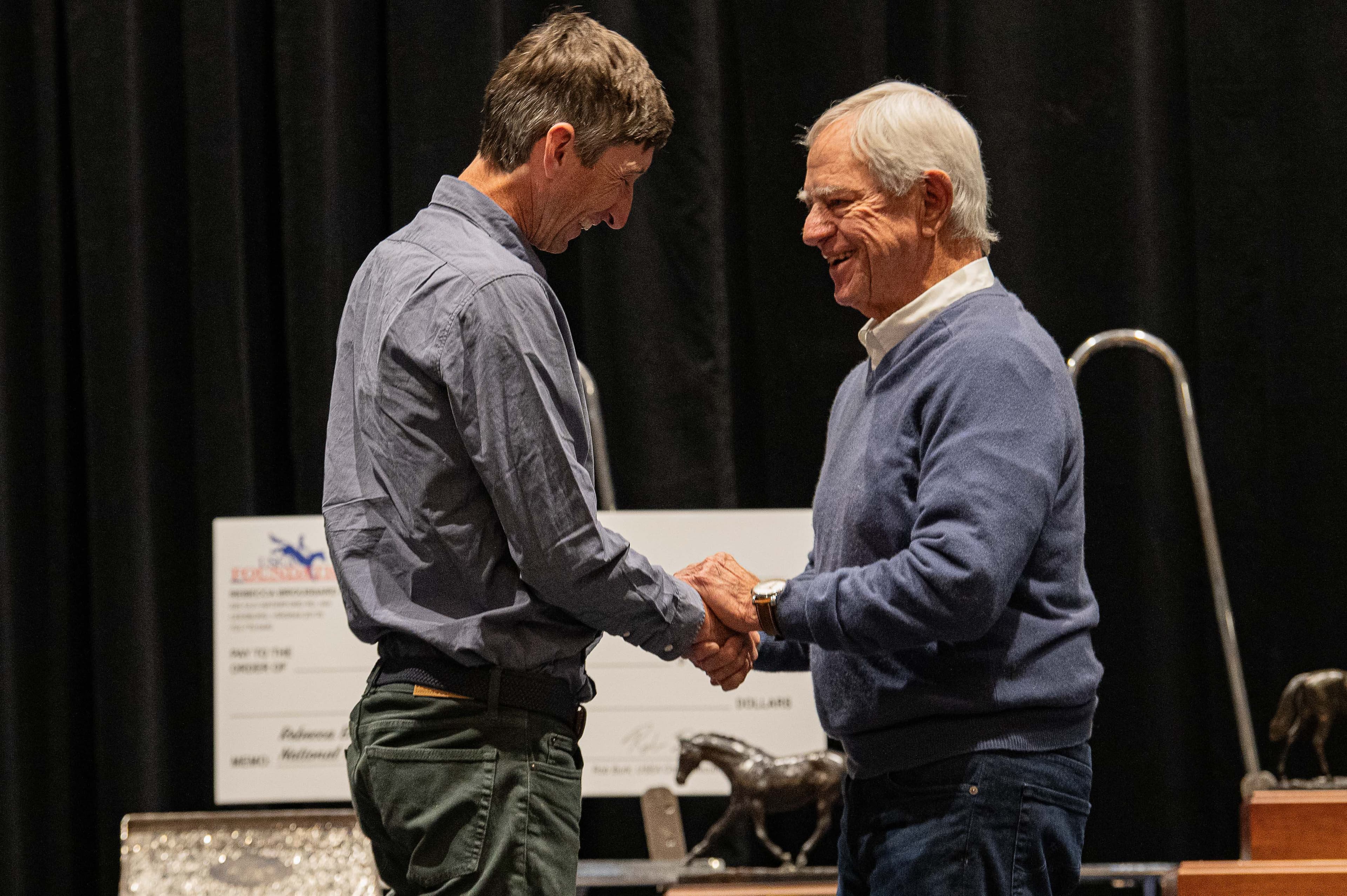Equine Biosecurity with Dr. Joe Lyman
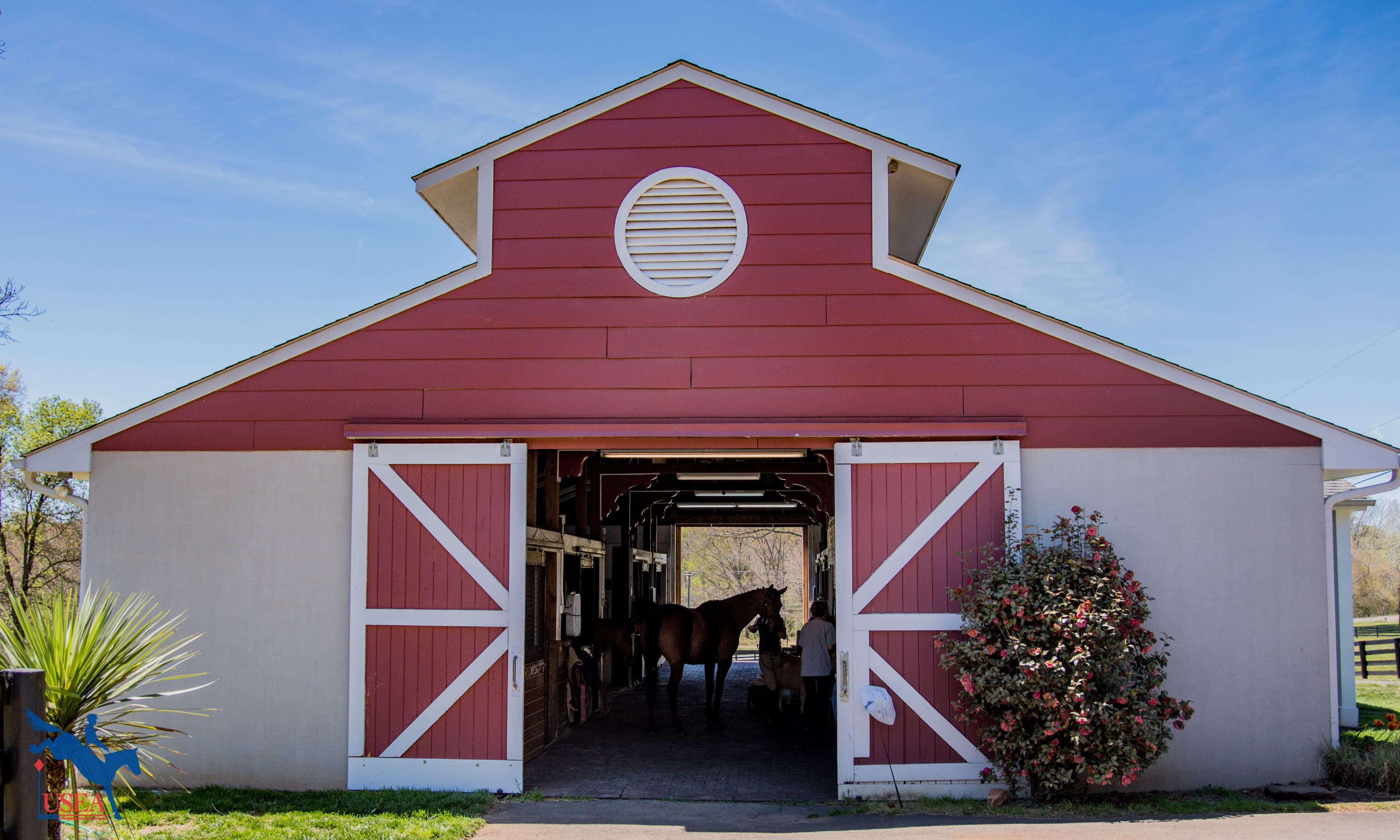
In the time of COVID-19, now more than ever people are thinking about the importance of biosecurity. What is biosecurity, exactly? Biosecurity is defined as the measures employed to reduce the impact of any infectious disease. For humans, this includes things like hand washing, wearing masks, and maintaining a safe distance from others to slow the spread of pathogens.
What about biosecurity for animals? Discussed with less frequency but of equal importance are the biosecurity measures put in place to protect our equine partners. “We want to limit the spread, and we want to limit the severity of cases when we do see them,” said Dr. Joe Lyman, Director of Research and Professional Services for the food and animal safety company Neogen. “As we look at biosecurity measures, we have to find the appropriate measures for our facility that still allow us to perform the functions we’re trying to perform. It can be very easy to come up with biosecurity practices that are so cumbersome that we aren’t able to do anything useful with the horses we have. It’s always going to be a balancing act between looking at the risks and severity of certain outcomes and trying to decide where we want to institute appropriate measures.”
Lyman emphasized the importance of practicing biosecurity at all times, not just in response to a newly perceived threat. “If you want biosecurity to be effective, you have to protect yourself all the time. In response to an outbreak, you may institute additional measures, but you should never go back to zero measures. You should always be assessing risk and making sure you’re responding to it.”
When discussing biosecurity, most often the focus is on mitigating exposure of the susceptible host to the pathogen, but limiting the number of susceptible hosts is crucial as well. “We want to be sure we’re maintaining as healthy a population of horses as possible, so staying current on vaccinations and not ignoring small signs of disease like coughs or runny noses,” Lyman said. “That’s as important for biosecurity as limiting exposure to pathogens.”
Lyman’s discussion of biosecurity was divided into three components: bioexclusion, biomanagement, and biocontainment. “Bioexclusion is everything we do to keep disease out of our facility; biomanagement is everything we do about disease that is in our facility; and biocontainment is one people very rarely think about, but it’s how we make sure disease doesn’t leave our facility. As we look at biosecurity plans and what we can do for our facilities, we need to make sure that all of our measures are thought about for each of these goals.”
Bioexclusion
“Bioexclusion is something that, in the livestock industry, is very aggressively practiced,” Lyman shared. “We see lots of bioexclusion measures being implemented by facilities now in response to COVID-19, and this is the area where you think of a good defense being the best offense. Anything you can do to keep pathogens from entering your facility means you don’t have to deal with measures for that pathogen on your facility.” Vaccination is one of the most common bioexclusion measures as it prevents the herd from developing any illness from specific pathogens.
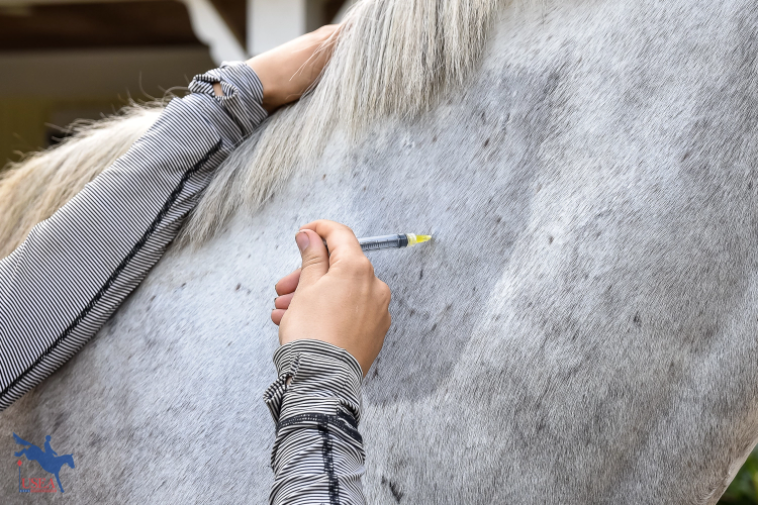
One of the easiest bioexclusion measures you can put in place is maintaining a closed herd. “Keeping other animals from entering into your population means that you don’t have to deal with the risk of an unknown health status animal coming in and potentially exposing your animal to additional disease,” Lyman said. “Obviously that’s not an option for every type of facility, but you can think about bioexclusion in a limited fashion where you say, ‘I’m going to practice bioexclusion in my aisle at the show or for this barn with only the resident horses that never leave the facility.’”
“Visitor control is an option that’s getting a lot of attention right now,” Lyman acknowledged. “It’s very easy – you simply make sure you aren’t allowing visitors in that pose a risk to your horses. Now that COVID-19 is all the news we’re also looking at visitor control into facilities, not just as risk to horses, but as risk to ourselves and our staff. If you do have to have visitors . . . you can make sure they’re taking appropriate steps on arrival to make sure they’re not bringing disease in with them.”
Heath records are an easy way to determine whether or not an animal is carrying any known pathogens onto your facility with them, and by instituting screening protocols and quarantine you can further mitigate these potential factors. “Quarantine isn’t available to everyone, and it’s quickly turning into a dirty word as we’re all sitting at home for weeks on end, but quarantine can be employed in a single barn facility by isolating an animal by not allowing them general access to your facility.”
“Entry hygiene is a big one that is really easy to employ,” Lyman said. “Entry hygiene is simply insisting that someone wash or sanitize their hand upon entry to the facility, and also includes a foot bath. It is possible to spread disease simply by walking from place to place in a facility, so you want to make sure you have a foot bath with a disinfectant at the entry to your facility to make sure that pathogens aren’t introduced as people walk in.”
“Wildlife barriers can be difficult to enact in a rural setting, but it is something to think about,” Lyman explained. “You need to be aware that wildlife is a potential source of disease in your facility. Insect and rodent control done on a perimeter basis is considered a bioexclusion measure – when you do those same things within your facility we call that biomanagement.”
Biomanagement
Biomanagement is what most people are thinking of when they talk about biosecurity, according to Lyman. “Environmental cleaning and disinfection is the number one biomanagement technique,” he said. “When I talk about biosecurity, most people just want to know what they should disinfect with and how often should they use it. That is an important part of biosecurity, but all the biosecurity behaviors have to be employed to make sure that environmental cleaning and disinfection is actually successful. Think of that as an important part of biosecurity, but not everything you’re going to do.”
Environmental surveillance is the practice of inspecting your facility for reservoirs of disease. “This can be really important for veterinary hospitals or boarding facilities that see potentially sick or at-risk animals frequently, but not every facility needs to be performing environmental surveillance,” Lyman said.
Animal diagnostics and immunostimulants are tools you can use to properly identify the disease affecting your animals or boost your herd’s immunity to particular diseases. Water treatment is another tool that can be used to protect your animals against infection.
“Make sure you have operations in place where you separate out the sick zone from the healthy zone,” Lyman cautioned. “Do everything in the healthy zone first, then go to the sick zone and manage those animals – you don’t travel back and forth from the sick animal to the healthy animals, you don’t take tools back and forth, you certainly don’t share tack, you make sure you’re not dipping the water hose into the bucket.”
Treatment of sick animals seems obvious, said Lyman, but in his experience, people in the equestrian community are willing to accept illness as a normal circumstance. “We see an awful lot of snotty noses and coughs,” he observed. “Treating those animals limits how many more pathogens are spreading back into the environment and you can actually reduce the severity and instance of disease by more aggressively treating what you would normally think of as minor illness.”
Biocontainment
Most people, Lyman said, don’t think much about the biocontainment portion of biosecurity, but it’s just as important as bioexclusion and biomanagement. “Biocontainment is making sure we are not taking disease from our facility and bringing it elsewhere,” he said. “There are zoonotic diseases in the horse world, zoonotic meaning it can pass from an animal to a human and because of the presence of those sorts of pathogens we want to make sure that we aren’t bringing them home with us.”
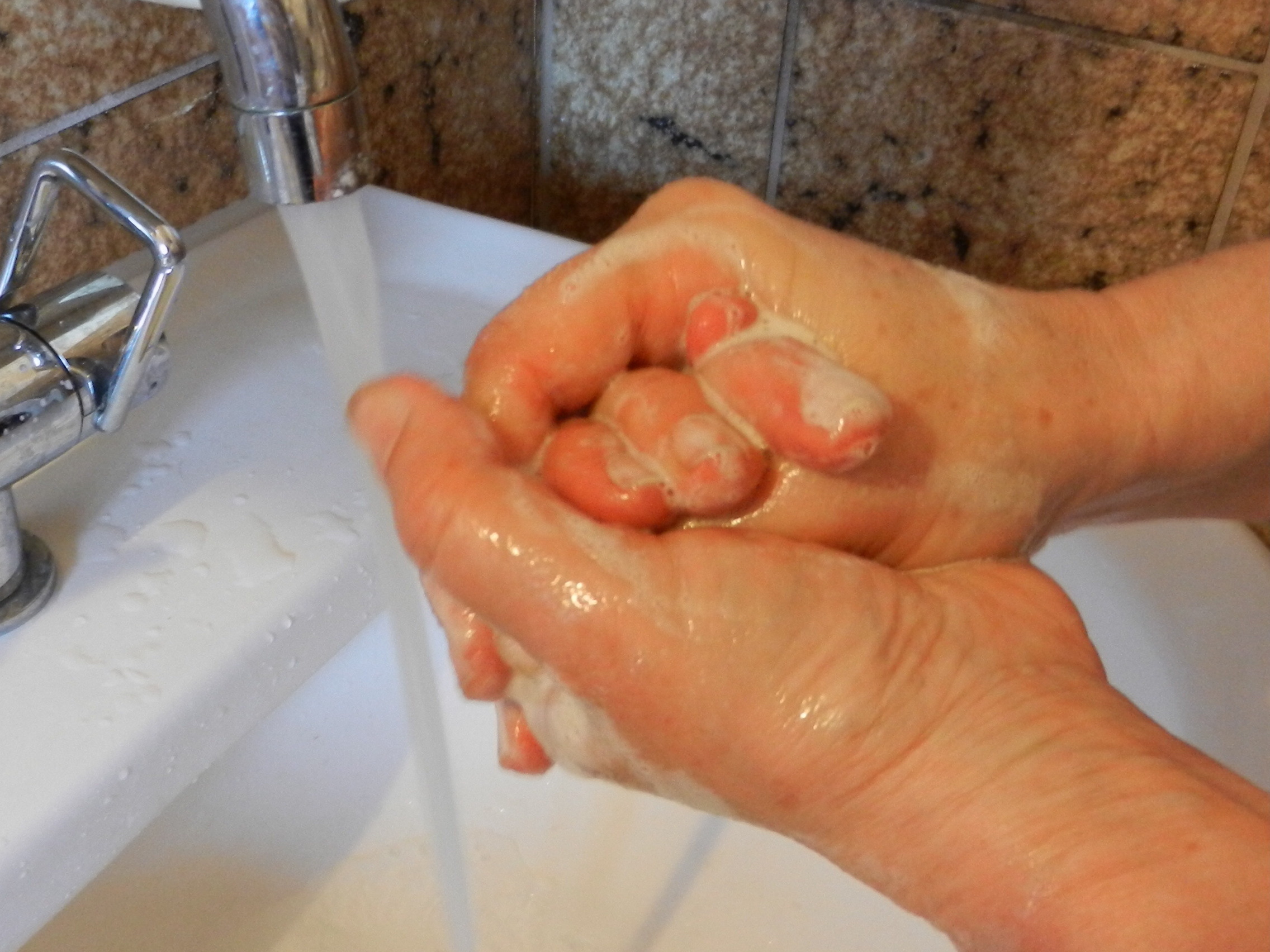
“Upon exiting your facility, you should be sure to use some form of hand hygiene – hand washing is my preference for this one over hand sanitization. Hand sanitization, according to the CDC guidelines is as good as hand washing only when hands are not soiled or contaminated and I think it’s a reasonable bet that if you’ve been working around a horse farm you’ve soiled or contaminated your hands.” In addition to hand washing, Lyman suggests using the foot bath upon exiting as well, and having a change of clothes and a change of footwear for when you leave the barn.
“Think of biocontainment as the thing you can do to make sure the community at large stays healthy and the steps that you’re taking to make sure your family and loved ones at home are staying healthy as well.”
Zones of Control
One of the things to think about when it comes to biosecurity are zones of control. “Zones of control are simply areas that have different known health statues, so one area of risk versus a separate area of risk,” said Lyman. “Any time you go from one area of risk to another, that’s a biosecurity event. If you start thinking about biosecurity plans in terms of biosecurity events, it becomes a little easier to understand where you should be implementing some sort of biosecurity measure.”
While one zone may exist between your facility and the rest of the world, you can also have zones within your facility itself. “If you have sick animals within the barn then you can have a sick zone and a healthy zone,” Lyman explained. “You can even think about dividing it further than that – if you have a boarding facility with a viewing room, that would be a separate zone of control from the aisle and you might think about employing biosecurity measures between those zones, even something as simple as having hand sanitizer at the door, that would give you some control between those two zones.”
Making a Biosecurity Plan
When putting together a biosecurity plan for your facility, you need to first designate a biosecurity officer. “The biosecurity officer doesn’t necessarily need to be a veterinarian, in fact it should be someone who sees your facility all the time and is accessible all the time. Having a good relationship with your veterinarian and making sure they’re involved in biosecurity planning is important, but the officer is the person who sees it all the time and is able to recognize when something isn’t being done according to plan.”
Compliance is an important factor for the success of any biosecurity plan. “It only works if everybody plays the same game,” Lyman stressed. “If you have one person in the facility who is not following the biosecurity plan, then the entire biosecurity plan is destined for failure. You need to make sure that you have everybody trained and you have your biosecurity officer doing periodic checks to make sure that there is full compliance.”
Every facility is unique, and every facility will have its own specific advantages and challenges when it comes to putting together a biosecurity plan. “When we start a biosecurity plan, the first thing we’re going to do is identify risks,” said Lyman. “Where do we see disease entering the facility? How is disease going to spread within the facility? Where will disease hide in your facility? Once we’ve identified those risk factors, we need to decide what we’re going to do about them.”
When identifying biosecurity measures you can take to protect your facility, Lyman encourages asking, “What behavioral changes are you going to make? Decreased travel from one area to the other? Visitor control? Bioexclusion? Making sure that you’re doing some sort of hand sanitization after contact events? Think about what tools you’re going to employ . . . How often will you use those tools? Are you going to disinfect daily? Weekly? After every potential contact? . . . Where will you employ your measures?”
Once you’ve decided exactly how you will protect your facility, proper execution is key. “Training is the big one here,” he said. “Making sure that everybody is aware of the biosecurity decisions and the biosecurity plan to make sure that they’re applied consistently and uniformly by your entire staff. This is where compliance charts come in – making sure that if you have a step that is supposed to be performed by somebody every day that they also have a checklist so you can verify that they’ve performed that biosecurity step. You can then use those charts in the review phase to make sure steps are being performed correctly.”
The final step of any biosecurity plan is the review phase, where you look back and examine your plan in practice for any necessary changes or updates. “In the review phase we’re going to think about records,” Lyman said. “You can review your biosecurity plan by looking back at the health records from the last year or the last month. How many animals got sick compared to the year before? Are there trends that you notice that indicate your biosecurity plan is working or not working?”
“Were there any specific disease outbreaks during that year, or month, or quarter? Is that because of new risks that you failed to identify or is it because of failure of the biosecurity plan? We also want to look at the business impacts. Did you reach your business goals as a result of the biosecurity plan or is the biosecurity plan that you enacted actually limiting your ability to be successful?”
“This is always a cycle,” Lyman concluded. “We don’t just make one biosecurity plan and then never think about it again. We want to make sure that we’re always executing on a biosecurity plan and reviewing to make sure it’s working the way we want it to work. Identify new risks as they show up, so if you become aware of a new disease outbreak, that’s a new risk and you may have to institute new controls. Always be executing and reviewing to make sure that you don’t have a stale plan and are meeting the needs of your facility.”
Thank you to Extension Horses for hosting the webinar on horse biosecurity and facility sanitation with Dr. Joe Lyman.
About Dr. Joe Lyman, DVM
Dr. Joe Lyman joined Neogen in 2014 after practicing equine medicine in Lexington, Kentucky for 12 years. In addition to his practice, he was an adjunct professor at Midway College and has been an invited speaker around the country on topics ranging from equine reproduction to farm biosecurity. He serves as Neogen’s Director of Research and Professional Services, taking active roles in product development, service, and support.


